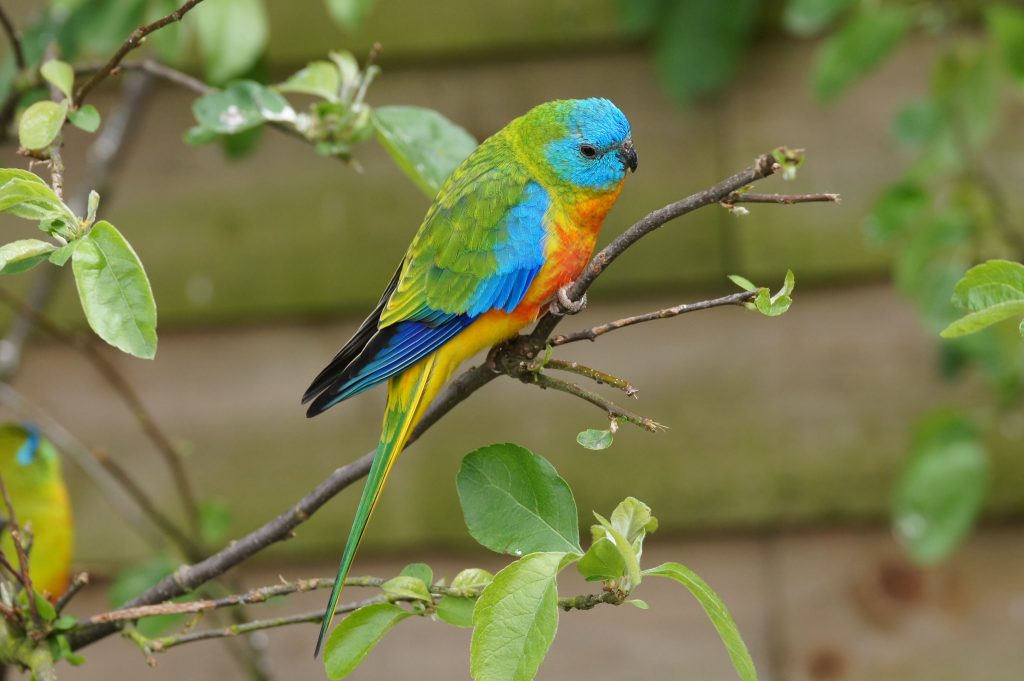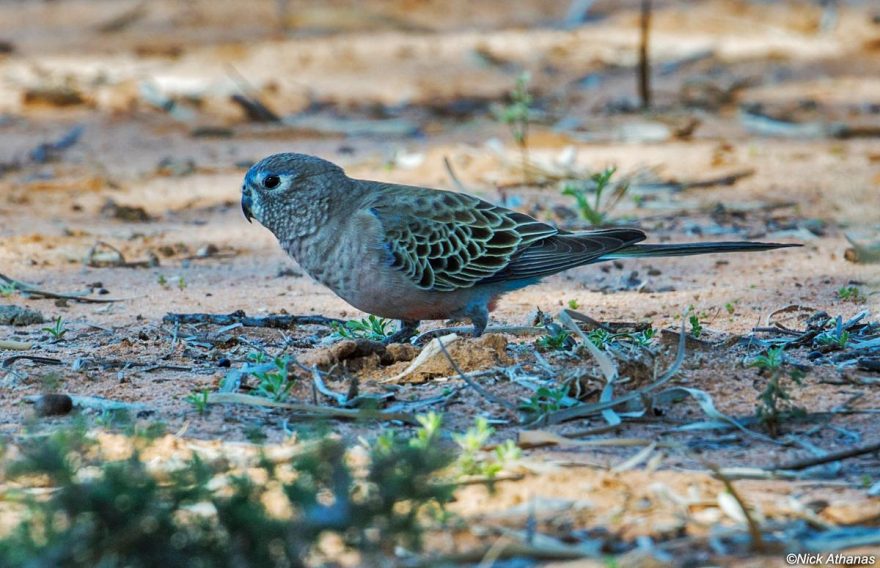Neophema parrots are a genus (or group) of six parrots found in Australia. Members include the blue-winged parrot, rock parrot, scarlet-chested parrot, elegant parrot, turquoise parrot, and orange-bellied parrot. For the purposes of the article, we’ll also be including the closely-related Bourke’s parrot as a member of the Neophema family.
As the most vividly coloured species in the genus, the scarlet-chested parrot and turquoise parrot are most commonly kept in aviculture. The somewhat duller Bourke’s (particularly the rosa/pink mutation) and the elegant parrot are also seen quite often.
The popularity of the species isn’t just limited to Australia. They can be found throughout the world, although their reluctance to breed in a cage makes them rare in places where aviary-breeding is impractical due to climate or space considerations.
In this post, we look at some of the reasons Neophema parrots are so popular in aviculture.

1: They look fantastic
This is the most immediately obvious explanation for their popularity. There aren’t many small affordable birds that have red, green, blue, yellow and a myriad of other colours all on the same bird. There are also hundreds of colour mutations that have been established, so there’s probably a Neophema available that has any combination of colours you can think of. Blue and white? Yep. Bright pink? Certainly. Yellow and orange? Of course.
2. They’re incredibly placid
Almost all of the parrots that can safely be housed in mixed species aviaries are in a Neophema genus. In a suitably large aviary, they can be housed with finches, doves, quail, softbills, and even other placid parrot species.
3. They’re calm and quiet
Neophemas are perfect for suburban backyard aviaries, because they hardly make any noise. Their call—if you ever manage to hear it—is just a soft chattering sound, and vastly less annoying than the shrieks and screeches of other similar-sized parrots like budgies and lovebirds.

4. They’re affordable and readily available
Being perfect aviary inhabitants makes them popular. That popularity results in many breeders choosing to keep them, which leads to many young being produced each year, which in turn pushes down prices. A pair of the commonly kept species will generally cost under $100 from a bird dealer, and far less if you buy from a private seller through a classifieds website. Some of the rarer mutations do, however, demand a much higher price.
5. They’re (reasonably) easy to look after
Seed, clean water, occasional greens, and a bit of flying space is all you need to successfully keep Neophema parrots. They’re probably not ideal for absolute beginners, but anyone who as successfully kept a bird alive for a year or two should be perfectly capable of caring for Neophema.
Couple of things to look out for though: Stress, particularly from overcrowding; disease, from poor hygiene and/or damp aviary floors; and weather, particularly cold and wet conditions in which they can struggle.
While you’re here
Do you keep Neophema parrots with finches? We’re holding a poll to answer that question right now on Aussie Finch Forum and would love to hear your thoughts.
can they be easily trained to talk. Are they good inside cage birds , how do you know if its a male.
They can’t be trained to talk, are generally better suited as an aviary bird, and sexing depends on the species. Check out the sexing section on our individual species profiles.